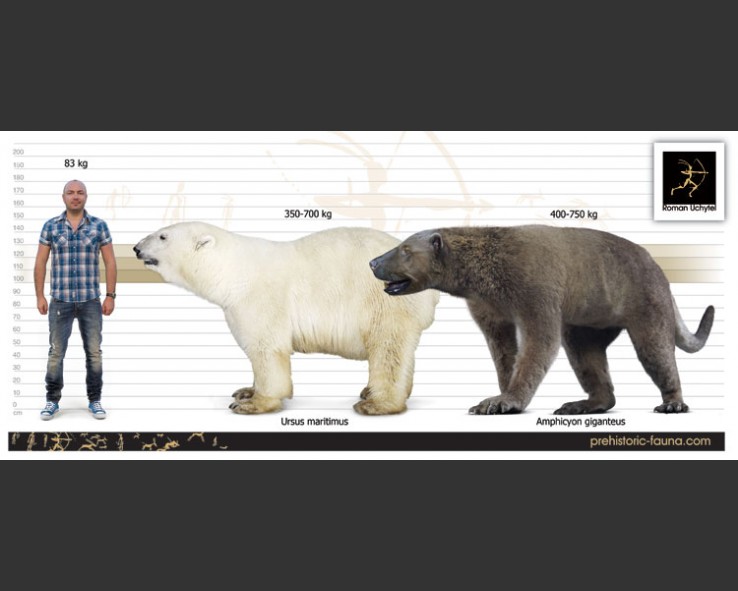|
|
Post by Infinity Blade on Jun 29, 2023 7:50:14 GMT 5
|
|
|
|
Post by Infinity Blade on Jul 31, 2023 20:30:56 GMT 5
Skull of Aquilops on top of the skull of Pentaceratops ( link->).  |
|
|
|
Post by theropod on Aug 10, 2023 4:24:56 GMT 5
 Not a nice comparison, but I was curious to see a rough indication of how the two relatively recent challengers to the blue whale compare in terms of bulk. Perucetus is based on the reconstruction in the description paper, with the dorsal view based on the thoracal depth/width ratio in Cynthiacetus. Hypothetical dashed/grey outline shows the amount of bulk it would need in order to match the approximate volume for the upper mass estimate of 340 t (which I do not think is realistic). The largest ichthyosaur silhouette is based on scaling S. sikanniensis up to the upper end of the size ratio for the Aust Cliff fragment (24/19*1.5=1.89 times as long). This is based on the Lilstock dentary being 24/19=1.26 times the size of S. sikanniensis, and the Aust Cliff fragment being 50% (although it may just as well be 30%) larger than that specimen. To be clear, the upper size figures illustrated here are both unlikely to be accurate, they are more of a thought experiment really. |
|
|
|
Post by Infinity Blade on Aug 11, 2023 7:46:03 GMT 5
Skulls of Basilosaurus isis (top) and Brachysuchus megalodon (bottom). Notice how the phytosaur's skull compares favorably to the archaeocete's, despite it being a much smaller animal overall. From the University of Michigan Museum of Natural History's Facebook page.  |
|
|
|
Post by Infinity Blade on Aug 11, 2023 7:56:39 GMT 5
 Not a nice comparison, but I was curious to see a rough indication of how the two relatively recent challengers to the blue whale compare in terms of bulk. Perucetus is based on the reconstruction in the description paper, with the dorsal view based on the thoracal depth/width ratio in Cynthiacetus. Hypothetical dashed/grey outline shows the amount of bulk it would need in order to match the approximate volume for the upper mass estimate of 340 t (which I do not think is realistic). The largest ichthyosaur silhouette is based on scaling S. sikanniensis up to the upper end of the size ratio for the Aust Cliff fragment (24/19*1.5=1.89 times as long). This is based on the Lilstock dentary being 24/19=1.26 times the size of S. sikanniensis, and the Aust Cliff fragment being 50% (although it may just as well be 30%) larger than that specimen. To be clear, the upper size figures illustrated here are both unlikely to be accurate, they are more of a thought experiment really. I'm going to be honest, the thing I was most shocked by here is the top view for Shonisaurus popularis. I thought it was much thinner in dorsal view. If this is anything to go by, it seems like its torso was actually pretty bulky, giving it some respectable (to say the least) heft for its length. Assuming a density of 1 kg/m 3, that would suggest a 25-ish tonne animal. And considering we now know that S. popularis was a macropredator instead of a toothless cephalopod suction feeder, that's a very terrifying image. |
|
|
|
Post by theropod on Aug 11, 2023 12:04:53 GMT 5
Well yes, I am myself somewhat surprised, although it fits in roughly with what Hartman stated once. That being said fishboy seems to doubt it was that wide, but he also seems to argue from a misunderstanding of what the reconstruction actually bases on (that being Hartman's current skeletal, which is in accordance with recent published works, and Camp 1980, which is not, but was only used for the depth/width ratio).
And it is indeed crazy wide. As correctly pointed out, Camp restored the ribs too long and did not account for them being swept back, resulting in the absurdly deep torso we are familiar with. But Hartman fixed both. As for the body cross-section in Camp's work, it is really wide (wider than deep) and subtriangular, quite weird-looking (as are most things about Shonisaurus I suppose). But this would not be affected by the shorter and swept ribs, if anything that would make it proportionately even wider.
|
|
|
|
Post by Hafstanni on Aug 24, 2023 19:52:57 GMT 5
A 20 m long Perucetus colossus compared to 25 and 30 m long blue whales. Attachments:
|
|
|
|
Post by Exalt on Aug 27, 2023 7:06:41 GMT 5
Here's a layout of what police confiscated. I'd much rather the crime had not occurred in the first place, but this picture does give us an interesting comparison to behold. This is kind of me with the La Brea tar pits. It's wonderful how much we've gotten out of them, but most if not all of the specimens would have died a horrible death... |
|
|
|
Post by Exalt on Aug 27, 2023 7:10:21 GMT 5
Smilodon populator and Smilodon fatalis.  This is crazy, but at the same time, I say this because none of the other scalings I have seen have given them this much difference. |
|
|
|
Post by Supercommunist on Sept 1, 2023 19:59:54 GMT 5
I found these size comparisons online. I find it weird how much bigger allosaurus looks than Barinasuchus even though their are supposed to be roughly the same mass. I know birds can look dimensionally bigger than a lot of similar massed mammals but this difference seems striking. Was the average allo really only 2 tons/2000 kilograms?   |
|
|
|
Post by Exalt on Sept 6, 2023 7:38:40 GMT 5
 Do we think that this one is about accurate? |
|
|
|
Post by Infinity Blade on Sept 6, 2023 19:17:17 GMT 5
 Do we think that this one is about accurate? There’s a recent body mass estimate for Amphicyon giganteus (or Megamphicyon, take your pick) that’s 600 kg. That’s easily male polar bear territory, and if it’s accurate, I could see it appearing that large. digital.csic.es/handle/10261/230330 |
|
|
|
Post by Infinity Blade on Sept 6, 2023 19:22:58 GMT 5
I found these size comparisons online. I find it weird how much bigger allosaurus looks than Barinasuchus even though their are supposed to be roughly the same mass. I know birds can look dimensionally bigger than a lot of similar massed mammals but this difference seems striking. Was the average allo really only 2 tons/2000 kilograms?   Sorry, only saw this just now. The maximum body mass estimates for Barinasuchus are still a *bit* less massive than a 2 t Allosaurus, so if you made them deadass equal in mass, the sebecid should appear a bit larger too. I don’t know how long the Allosaurus in these size comps is supposed to be, though. I honestly think that the height difference is contributing partially to this dimensional size discrepancy. Barinasuchus seems to be plantigrade in these silhouettes (and I think it’s safe to assume it was irl too) with long feet, so that’s a lot of foot length that’s not raised up and making it appear taller. |
|
|
|
Post by theropod on Sept 6, 2023 20:13:38 GMT 5
I found these size comparisons online. I find it weird how much bigger allosaurus looks than Barinasuchus even though their are supposed to be roughly the same mass. I know birds can look dimensionally bigger than a lot of similar massed mammals but this difference seems striking. Was the average allo really only 2 tons/2000 kilograms?   Such a thing as an average Allosaurus is surprisingly difficult to calculate. While my best guess is that it is somewhere between 8 and 9 m, and 2 t might be quite close, this isn’t based on any reliable data (despite being claimed sometimes on the internet). The two main problems are taxonomic complexity ( A. jimmadseni, A. fragilis, Saurophaganax/A. maximus and multiple indeterminate sllosaurid specimens). So I’m not at all sure what size the Allosaurus silhouette in this comparison is supposed to represent, or if it is supposed to represent the average…and if it is supposed to be the average, then it is quite questionable and imprecise. As we all know, random people making size comparisons on the internet often do not do solid statistics and attempt to show representative sizes of the animals in question, but more commonly pick random specimens or reported maximum sizes (in the case of Allosaurus, a commonly shown specimen would be DINO 2560, which, to be fair, might be close to average-sized). Since I am also not very familiar with size estimates for Barinasuchus, it’s pretty unclear to me what sizes (even lengthwise) they are both supposed to be here. That being said, yes, the Allosaurus depicted is indeed probably more voluminous than the Barinasuchus:  But there are multiple exacerbating circumstances that likely make the Allosaurus visually appear disproportionately large here. Firstly, it is possibly narrower-bodied: above I’ve constructed the dorsal-view silhouettes based on the dorsoventral diameters. The one for the Barinasuchus is as wide-bodied as it is deep, while for the Allosaurus one is only 70% as wide as deep, which shrinks down the difference in volume significantly. And secondly, the Allosaurus is likely more pneumatic, which would further shrink down the difference in actual mass compared to what the volumes would suggest. If we assume the Allosaurus had a body width 0.7 times the depth, and a density of 0.9, whereas the Barinasuchus had a density of 1 and a width/depth ratio of 1, then we end up with a difference in mass of only about 11% here, which would seem to qualify as being quite similar in mass, even though due to the aforementioned factors it looks like the difference should be greater. Compared to the imprecision in how big the average Allosaurus was, and the likely imprecision inherent in the reconstruction of Barinasuchus, this is not a very significant difference. |
|
|
|
Post by Supercommunist on Sept 6, 2023 21:48:51 GMT 5
|
|